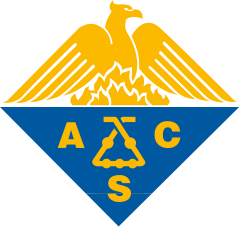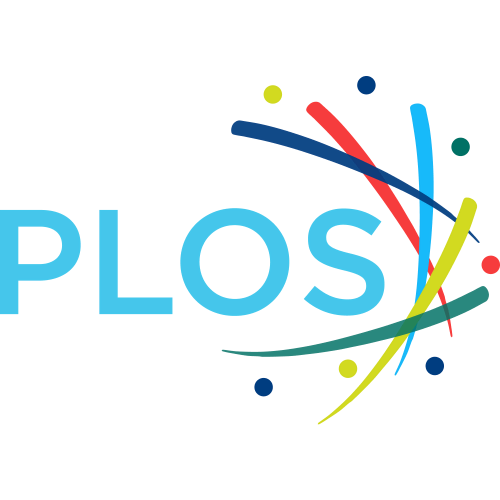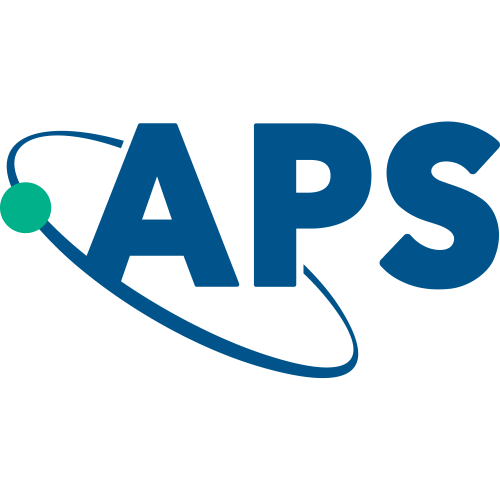Open Access


A machine learning approach to predicting protein–ligand binding affinity with applications to molecular docking
Publication type: Journal Article
Publication date: 2010-03-17
scimago Q1
wos Q1
SJR: 2.451
CiteScore: 9.6
Impact factor: 5.4
ISSN: 13674803, 13674811, 14602059
PubMed ID:
20236947
Biochemistry
Computer Science Applications
Molecular Biology
Statistics and Probability
Computational Mathematics
Computational Theory and Mathematics
Abstract
Accurately predicting the binding affinities of large sets of diverse protein-ligand complexes is an extremely challenging task. The scoring functions that attempt such computational prediction are essential for analysing the outputs of molecular docking, which in turn is an important technique for drug discovery, chemical biology and structural biology. Each scoring function assumes a predetermined theory-inspired functional form for the relationship between the variables that characterize the complex, which also include parameters fitted to experimental or simulation data and its predicted binding affinity. The inherent problem of this rigid approach is that it leads to poor predictivity for those complexes that do not conform to the modelling assumptions. Moreover, resampling strategies, such as cross-validation or bootstrapping, are still not systematically used to guard against the overfitting of calibration data in parameter estimation for scoring functions.We propose a novel scoring function (RF-Score) that circumvents the need for problematic modelling assumptions via non-parametric machine learning. In particular, Random Forest was used to implicitly capture binding effects that are hard to model explicitly. RF-Score is compared with the state of the art on the demanding PDBbind benchmark. Results show that RF-Score is a very competitive scoring function. Importantly, RF-Score's performance was shown to improve dramatically with training set size and hence the future availability of more high-quality structural and interaction data is expected to lead to improved versions of RF-Score.pedro.ballester@ebi.ac.uk; jbom@st-andrews.ac.ukSupplementary data are available at Bioinformatics online.
Found
Nothing found, try to update filter.
Found
Nothing found, try to update filter.
Top-30
Journals
|
20
40
60
80
100
120
|
|
|
Journal of Chemical Information and Modeling
106 publications, 13.66%
|
|
|
Briefings in Bioinformatics
23 publications, 2.96%
|
|
|
Methods in Molecular Biology
22 publications, 2.84%
|
|
|
Journal of Cheminformatics
18 publications, 2.32%
|
|
|
Bioinformatics
18 publications, 2.32%
|
|
|
Lecture Notes in Computer Science
14 publications, 1.8%
|
|
|
BMC Bioinformatics
13 publications, 1.68%
|
|
|
Molecules
12 publications, 1.55%
|
|
|
Journal of Computer-Aided Molecular Design
12 publications, 1.55%
|
|
|
ACS Omega
11 publications, 1.42%
|
|
|
International Journal of Molecular Sciences
10 publications, 1.29%
|
|
|
Computational and Structural Biotechnology Journal
10 publications, 1.29%
|
|
|
Wiley Interdisciplinary Reviews: Computational Molecular Science
10 publications, 1.29%
|
|
|
Journal of Chemical Theory and Computation
10 publications, 1.29%
|
|
|
Scientific Reports
9 publications, 1.16%
|
|
|
Drug Discovery Today
9 publications, 1.16%
|
|
|
PLoS ONE
9 publications, 1.16%
|
|
|
Molecular Informatics
8 publications, 1.03%
|
|
|
Current Medicinal Chemistry
8 publications, 1.03%
|
|
|
Journal of Bioinformatics and Computational Biology
6 publications, 0.77%
|
|
|
Molecular Diversity
6 publications, 0.77%
|
|
|
IEEE/ACM Transactions on Computational Biology and Bioinformatics
6 publications, 0.77%
|
|
|
Nature Machine Intelligence
5 publications, 0.64%
|
|
|
Computers in Biology and Medicine
5 publications, 0.64%
|
|
|
Journal of Molecular Graphics and Modelling
5 publications, 0.64%
|
|
|
Journal of Biomolecular Structure and Dynamics
5 publications, 0.64%
|
|
|
Journal of Computational Chemistry
5 publications, 0.64%
|
|
|
Chemical Biology and Drug Design
5 publications, 0.64%
|
|
|
Journal of Physical Chemistry B
5 publications, 0.64%
|
|
|
20
40
60
80
100
120
|
Publishers
|
20
40
60
80
100
120
140
160
|
|
|
American Chemical Society (ACS)
150 publications, 19.33%
|
|
|
Springer Nature
144 publications, 18.56%
|
|
|
Elsevier
112 publications, 14.43%
|
|
|
Wiley
71 publications, 9.15%
|
|
|
Oxford University Press
43 publications, 5.54%
|
|
|
Institute of Electrical and Electronics Engineers (IEEE)
38 publications, 4.9%
|
|
|
MDPI
36 publications, 4.64%
|
|
|
Cold Spring Harbor Laboratory
33 publications, 4.25%
|
|
|
Taylor & Francis
18 publications, 2.32%
|
|
|
Royal Society of Chemistry (RSC)
15 publications, 1.93%
|
|
|
Bentham Science Publishers Ltd.
13 publications, 1.68%
|
|
|
IGI Global
13 publications, 1.68%
|
|
|
Frontiers Media S.A.
12 publications, 1.55%
|
|
|
Public Library of Science (PLoS)
11 publications, 1.42%
|
|
|
World Scientific
7 publications, 0.9%
|
|
|
IOP Publishing
4 publications, 0.52%
|
|
|
Association for Computing Machinery (ACM)
3 publications, 0.39%
|
|
|
Hindawi Limited
3 publications, 0.39%
|
|
|
IntechOpen
3 publications, 0.39%
|
|
|
American Physical Society (APS)
2 publications, 0.26%
|
|
|
Impact Journals
2 publications, 0.26%
|
|
|
The Royal Society
2 publications, 0.26%
|
|
|
SAGE
2 publications, 0.26%
|
|
|
Cambridge University Press
2 publications, 0.26%
|
|
|
Walter de Gruyter
2 publications, 0.26%
|
|
|
Proceedings of the National Academy of Sciences (PNAS)
2 publications, 0.26%
|
|
|
Annual Reviews
2 publications, 0.26%
|
|
|
Society for Industrial and Applied Mathematics (SIAM)
1 publication, 0.13%
|
|
|
AIP Publishing
1 publication, 0.13%
|
|
|
20
40
60
80
100
120
140
160
|
- We do not take into account publications without a DOI.
- Statistics recalculated weekly.
Are you a researcher?
Create a profile to get free access to personal recommendations for colleagues and new articles.
Metrics
777
Total citations:
777
Citations from 2024:
219
(28.23%)
Cite this
GOST |
RIS |
BibTex |
MLA
Cite this
GOST
Copy
Ballester P., Mitchell J. B. O. A machine learning approach to predicting protein–ligand binding affinity with applications to molecular docking // Bioinformatics. 2010. Vol. 26. No. 9. pp. 1169-1175.
GOST all authors (up to 50)
Copy
Ballester P., Mitchell J. B. O. A machine learning approach to predicting protein–ligand binding affinity with applications to molecular docking // Bioinformatics. 2010. Vol. 26. No. 9. pp. 1169-1175.
Cite this
RIS
Copy
TY - JOUR
DO - 10.1093/bioinformatics/btq112
UR - https://doi.org/10.1093/bioinformatics/btq112
TI - A machine learning approach to predicting protein–ligand binding affinity with applications to molecular docking
T2 - Bioinformatics
AU - Ballester, Pedro
AU - Mitchell, John B. O.
PY - 2010
DA - 2010/03/17
PB - Oxford University Press
SP - 1169-1175
IS - 9
VL - 26
PMID - 20236947
SN - 1367-4803
SN - 1367-4811
SN - 1460-2059
ER -
Cite this
BibTex (up to 50 authors)
Copy
@article{2010_Ballester,
author = {Pedro Ballester and John B. O. Mitchell},
title = {A machine learning approach to predicting protein–ligand binding affinity with applications to molecular docking},
journal = {Bioinformatics},
year = {2010},
volume = {26},
publisher = {Oxford University Press},
month = {mar},
url = {https://doi.org/10.1093/bioinformatics/btq112},
number = {9},
pages = {1169--1175},
doi = {10.1093/bioinformatics/btq112}
}
Cite this
MLA
Copy
Ballester, Pedro, and John B. O. Mitchell. “A machine learning approach to predicting protein–ligand binding affinity with applications to molecular docking.” Bioinformatics, vol. 26, no. 9, Mar. 2010, pp. 1169-1175. https://doi.org/10.1093/bioinformatics/btq112.






































